11-Aminoundecanoic acid
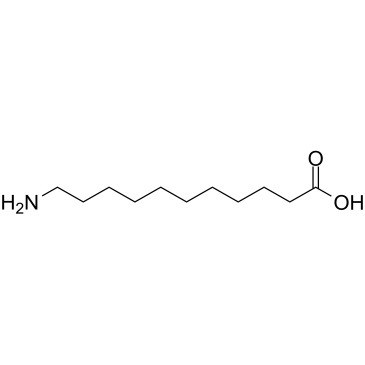
11-Aminoundecanoic acid structure
|
Common Name | 11-Aminoundecanoic acid | ||
|---|---|---|---|---|
| CAS Number | 2432-99-7 | Molecular Weight | 201.306 | |
| Density | 1.0±0.1 g/cm3 | Boiling Point | 334.9±15.0 °C at 760 mmHg | |
| Molecular Formula | C11H23NO2 | Melting Point | 188-191 °C(lit.) | |
| MSDS | Chinese USA | Flash Point | 156.3±20.4 °C | |
Use of 11-Aminoundecanoic acid11-Aminoundecanoic acid is a PROTAC linker, which refers to the alkyl chain composition. 11-Aminoundecanoic acid can be used in the synthesis of a series of PROTACs. |
| Name | 11-Aminoundecanoic acid |
|---|---|
| Synonym | More Synonyms |
| Description | 11-Aminoundecanoic acid is a PROTAC linker, which refers to the alkyl chain composition. 11-Aminoundecanoic acid can be used in the synthesis of a series of PROTACs. |
|---|---|
| Related Catalog | |
| Target |
Alkyl-Chain |
| References |
| Density | 1.0±0.1 g/cm3 |
|---|---|
| Boiling Point | 334.9±15.0 °C at 760 mmHg |
| Melting Point | 188-191 °C(lit.) |
| Molecular Formula | C11H23NO2 |
| Molecular Weight | 201.306 |
| Flash Point | 156.3±20.4 °C |
| Exact Mass | 201.172882 |
| PSA | 63.32000 |
| LogP | 2.55 |
| Vapour Pressure | 0.0±1.6 mmHg at 25°C |
| Index of Refraction | 1.470 |
| Water Solubility | 2 g/L (20 ºC) |
|
SECTION 1: Identification of the substance/mixture and of the company/undertaking Product identifiers Product name: 11-Aminoundecanoic acid REACH No.: A registration number is not available for this substance as the substance or its uses are exempted from registration, the annual tonnage does not require a registration or the registration is envisaged for a later registration deadline.
CAS-No.: 2432-99-7 Relevant identified uses of the substance or mixture and uses advised against Identified uses: Laboratory chemicals, Manufacture of substances SECTION 2: Hazards identification Classification of the substance or mixture Not a hazardous substance or mixture according to Regulation (EC) No. 1272/2008. Classification according to EU Directives 67/548/EEC or 1999/45/EC R52 For the full text of the R-phrases mentioned in this Section, see Section 16. Label elements Other hazards This substance/mixture contains no components considered to be either persistent, bioaccumulative and toxic (PBT), or very persistent and very bioaccumulative (vPvB) at levels of 0.1% or higher. SECTION 3: Composition/information on ingredients Substances Formula: C11H23NO2 Molecular weight: 201,31 g/mol CAS-No.: 2432-99-7 EC-No.: 219-417-6 Hazardous ingredients according to Regulation (EC) No 1272/2008 ComponentClassificationConcentration 11-Aminoundecanoic acid CAS-No.2432-99-7<= 100 % EC-No.219-417-6 Hazardous ingredients according to Directive 1999/45/EC ComponentClassificationConcentration 11-Aminoundecanoic acid CAS-No.2432-99-7R52<= 100 % EC-No.219-417-6 SECTION 4: First aid measures Description of first aid measures General advice Consult a physician. Show this safety data sheet to the doctor in attendance. If inhaled If breathed in, move person into fresh air. If not breathing, give artificial respiration. Consult a physician. In case of skin contact Wash off with soap and plenty of water. Consult a physician. In case of eye contact Flush eyes with water as a precaution. If swallowed Never give anything by mouth to an unconscious person. Rinse mouth with water. Consult a physician. Most important symptoms and effects, both acute and delayed The most important known symptoms and effects are described in the labelling (see section 2.2) and/or in section 11 Indication of any immediate medical attention and special treatment needed No data available SECTION 5: Firefighting measures Extinguishing media Suitable extinguishing media Use water spray, alcohol-resistant foam, dry chemical or carbon dioxide. Special hazards arising from the substance or mixture Carbon oxides, Nitrogen oxides (NOx) Advice for firefighters Wear self-contained breathing apparatus for firefighting if necessary. Further information No data available SECTION 6: Accidental release measures Personal precautions, protective equipment and emergency procedures Avoid dust formation. Avoid breathing vapours, mist or gas. Ensure adequate ventilation. For personal protection see section 8. Environmental precautions Prevent further leakage or spillage if safe to do so. Do not let product enter drains. Discharge into the environment must be avoided. Methods and materials for containment and cleaning up Pick up and arrange disposal without creating dust. Sweep up and shovel. Keep in suitable, closed containers for disposal. Reference to other sections For disposal see section 13. SECTION 7: Handling and storage Precautions for safe handling Provide appropriate exhaust ventilation at places where dust is formed. For precautions see section 2.2. Conditions for safe storage, including any incompatibilities Store in cool place. Keep container tightly closed in a dry and well-ventilated place. Storage class (TRGS 510): Non Combustible Solids Specific end use(s) Apart from the uses mentioned in section 1.2 no other specific uses are stipulated SECTION 8: Exposure controls/personal protection Control parameters Components with workplace control parameters Exposure controls Appropriate engineering controls Handle in accordance with good industrial hygiene and safety practice. Wash hands before breaks and at the end of workday. Personal protective equipment Eye/face protection Use equipment for eye protection tested and approved under appropriate government standards such as NIOSH (US) or EN 166(EU). Skin protection Handle with gloves. Gloves must be inspected prior to use. Use proper glove removal technique (without touching glove's outer surface) to avoid skin contact with this product. Dispose of contaminated gloves after use in accordance with applicable laws and good laboratory practices. Wash and dry hands. The selected protective gloves have to satisfy the specifications of EU Directive 89/686/EEC and the standard EN 374 derived from it. Body Protection Choose body protection in relation to its type, to the concentration and amount of dangerous substances, and to the specific work-place., The type of protective equipment must be selected according to the concentration and amount of the dangerous substance at the specific workplace. Respiratory protection Respiratory protection is not required. Where protection from nuisance levels of dusts are desired, use type N95 (US) or type P1 (EN 143) dust masks. Use respirators and components tested and approved under appropriate government standards such as NIOSH (US) or CEN (EU). Control of environmental exposure Prevent further leakage or spillage if safe to do so. Do not let product enter drains. Discharge into the environment must be avoided. SECTION 9: Physical and chemical properties Information on basic physical and chemical properties a) AppearanceForm: powder Colour: white b) OdourNo data available c) Odour ThresholdNo data available d) pHNo data available e) Melting point/freezingMelting point/range: 188 - 191 °C - lit. point f) Initial boiling point and No data available boiling range g) Flash pointNo data available h) Evaporation rateNo data available i) Flammability (solid, gas) The product is not flammable. - Flammability (solids) j) Upper/lowerNo data available flammability or explosive limits k) Vapour pressureNo data available l) Vapour densityNo data available m) Relative densityNo data available n) Water solubility0,8 g/l at 25 °C - soluble o) Partition coefficient: n- No data available octanol/water p) Auto-ignition> 360 °C at 1.013,25 hPa temperature q) Decomposition> 180 - < 240 °C - temperature r) ViscosityNo data available s) Explosive propertiesNo data available t) Oxidizing propertiesNo data available Other safety information Bulk density0,5 g/l at 20 °C SECTION 10: Stability and reactivity Reactivity No data available Chemical stability Stable under recommended storage conditions. Possibility of hazardous reactions No data available Conditions to avoid No data available Incompatible materials Strong bases Hazardous decomposition products Other decomposition products - No data available In the event of fire: see section 5 SECTION 11: Toxicological information Information on toxicological effects Acute toxicity LD50 Oral - Rat - female - 14.700 - 21.500 mg/kg (OECD Test Guideline 401) LD0 Dermal - Rat - male and female - >= 2.000 mg/kg (OECD Test Guideline 402) Skin corrosion/irritation Skin - Rabbit Result: No skin irritation - 23 h (OECD Test Guideline 404) Serious eye damage/eye irritation Eyes - Rabbit Result: No eye irritation - 7 d (OECD Test Guideline 405) Respiratory or skin sensitisation Maximisation Test (GPMT) - Guinea pig Result: Does not cause skin sensitisation. (OECD Test Guideline 406) Germ cell mutagenicity Hamster ovary Result: negative OECD Test Guideline 484 Mouse - male Result: negative Carcinogenicity Carcinogenicity - Rat - Oral Tumorigenic:Carcinogenic by RTECS criteria. Kidney, Ureter, Bladder:Tumors. Carcinogenicity - Rat - Oral Tumorigenic:Neoplastic by RTECS criteria. Skin and Appendages: Other: Tumors. IARC:3 - Group 3: Not classifiable as to its carcinogenicity to humans (11-Aminoundecanoic acid) Reproductive toxicity No data available Specific target organ toxicity - single exposure No data available Specific target organ toxicity - repeated exposure No data available Aspiration hazard No data available Additional Information RTECS: YQ2293000 SECTION 12: Ecological information Toxicity Toxicity to fishstatic test LC50 - Danio rerio (zebra fish) - > 833 mg/l - 96 h (OECD Test Guideline 203) Toxicity to daphnia and static test EC50 - Daphnia magna (Water flea) - > 350 mg/l - 48 h other aquatic(OECD Test Guideline 202) invertebrates Toxicity to algaestatic test EC50 - Pseudokirchneriella subcapitata - 53 mg/l - 72 h (OECD Test Guideline 201) Toxicity to bacteriaGrowth inhibition EC50 - Pseudomonas putida - 1,5 mg/l - 16 h Persistence and degradability Biodegradabilityaerobic - Exposure time 28 d Result: 77 % - Readily biodegradable. (OECD Test Guideline 301B) Bioaccumulative potential No data available Mobility in soil No data available Results of PBT and vPvB assessment This substance/mixture contains no components considered to be either persistent, bioaccumulative and toxic (PBT), or very persistent and very bioaccumulative (vPvB) at levels of 0.1% or higher. Other adverse effects Harmful to aquatic life. SECTION 13: Disposal considerations Waste treatment methods Product Offer surplus and non-recyclable solutions to a licensed disposal company. Dissolve or mix the material with a combustible solvent and burn in a chemical incinerator equipped with an afterburner and scrubber. Contaminated packaging Dispose of as unused product. SECTION 14: Transport information UN number ADR/RID: -IMDG: -IATA: - UN proper shipping name ADR/RID: Not dangerous goods IMDG: Not dangerous goods IATA:Not dangerous goods Transport hazard class(es) ADR/RID: -IMDG: -IATA: - Packaging group ADR/RID: -IMDG: -IATA: - Environmental hazards ADR/RID: noIMDG Marine pollutant: noIATA: no Special precautions for user No data available SECTION 15: Regulatory information This safety datasheet complies with the requirements of Regulation (EC) No. 1907/2006. Safety, health and environmental regulations/legislation specific for the substance or mixture No data available Chemical Safety Assessment For this product a chemical safety assessment was not carried out SECTION 16: Other information Full text of R-phrases referred to under sections 2 and 3 R52 Harmful to aquatic organisms. Further information Copyright 2014 Co. LLC. License granted to make unlimited paper copies for internal use only. The above information is believed to be correct but does not purport to be all inclusive and shall be used only as a guide. The information in this document is based on the present state of our knowledge and is applicable to the product with regard to appropriate safety precautions. It does not represent any guarantee of the properties of the product. Corporation and its Affiliates shall not be held liable for any damage resulting from handling or from contact with the above product. See and/or the reverse side of invoice or packing slip for additional terms and conditions of sale. |
CHEMICAL IDENTIFICATION
HEALTH HAZARD DATAACUTE TOXICITY DATA
MUTATION DATA
|
| Personal Protective Equipment | Eyeshields;Gloves;type N95 (US);type P1 (EN143) respirator filter |
|---|---|
| Hazard Codes | Xn:Harmful; |
| Risk Phrases | 52 |
| Safety Phrases | S24/25 |
| RIDADR | NONH for all modes of transport |
| WGK Germany | 1 |
| RTECS | YQ2293000 |
| HS Code | 29224995 |
| Precursor 7 | |
|---|---|
| DownStream 10 | |
| HS Code | 2922499990 |
|---|---|
| Summary | HS:2922499990 other amino-acids, other than those containing more than one kind of oxygen function, and their esters; salts thereof VAT:17.0% Tax rebate rate:9.0% Supervision conditions:AB(certificate of inspection for goods inward,certificate of inspection for goods outward) MFN tariff:6.5% General tariff:30.0% |
|
Advanced material and approach for metal ions removal from aqueous solutions.
Sci. Rep. 5 , 8992, (2015) A Novel approach to remove metals from aqueous solutions has been developed. The method is based on a resin free, solid, non-toxic, microcrystalline bisphosphonate material, which has very low solubil... |
|
|
Development of 68Ga-labeled fatty acids for their potential use in cardiac metabolic imaging.
J. Labelled Comp. Radiopharm. 57(7) , 463-9, (2014) While [(11)C]palmitate continues to be a promising tracer for cardiovascular Positron Emission Tomography (PET) imaging, unfavourable logistics due to the short half-life of (11)C (20 min) and cumbers... |
|
|
Biocompatibility of Fe(3)O(4) nanoparticles evaluated by in vitro cytotoxicity assays using normal, glia and breast cancer cells.
Nanotechnology 21 , 75102, (2010) In order to reveal the biocompatibility of Fe(3)O(4) nanoparticles and bipolar surfactant tetramethylammonium 11-aminoundecanoate cytotoxicity tests were performed as a function of concentration from ... |
| H-11-Aun-OH |
| NH2-(CH2)10-COOH |
| Undecanoic acid, 11-amino- |
| 11-Aminoundecansure |
| MFCD00008150 |
| 11-Amino-undecansaeure |
| aminoundecanoicacid |
| 11-Aminoundecanoic a |
| EINECS 219-417-6 |
| 4-04-00-02823 (Beilstein Handbook Reference) |
| 11-amino-undecanoicaci |
| 11-amino-n-undecanoic acid |
| 11-amino-undecanoic acid |
| 11-aminoundecyclic acid |
| 11-Aminoundecylic acid |
| 11-Aminoundecanoic acid |
 CAS#:100400-58-6
CAS#:100400-58-6 CAS#:2834-05-1
CAS#:2834-05-1![(Z)-11-[(2R,3S)-3-pentyloxiran-2-yl]undec-9-enoic acid Structure](https://image.chemsrc.com/caspic/308/17966-13-1.png) CAS#:17966-13-1
CAS#:17966-13-1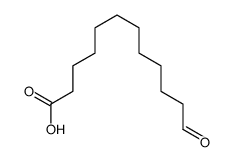 CAS#:3956-80-7
CAS#:3956-80-7 CAS#:91694-67-6
CAS#:91694-67-6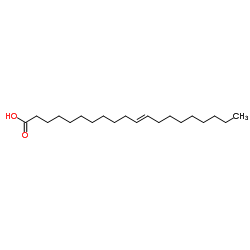 CAS#:5561-99-9
CAS#:5561-99-9 CAS#:106738-27-6
CAS#:106738-27-6 CAS#:57079-01-3
CAS#:57079-01-3 CAS#:3669-80-5
CAS#:3669-80-5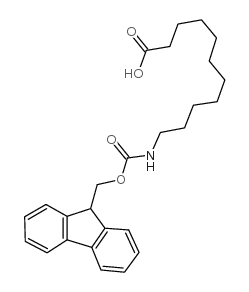 CAS#:88574-07-6
CAS#:88574-07-6 CAS#:59178-93-7
CAS#:59178-93-7 CAS#:10436-25-6
CAS#:10436-25-6 CAS#:15351-28-7
CAS#:15351-28-7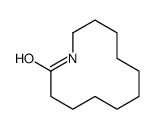 CAS#:1202-71-7
CAS#:1202-71-7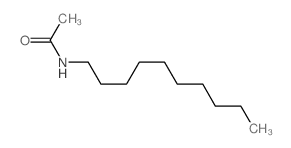 CAS#:16423-52-2
CAS#:16423-52-2![11-[(2-chloroacetyl)amino]undecanoic acid structure](https://image.chemsrc.com/caspic/398/65332-02-7.png) CAS#:65332-02-7
CAS#:65332-02-7
